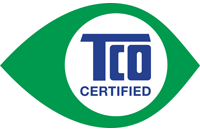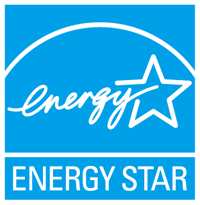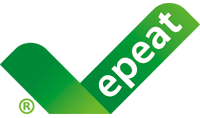Environmental Labelling
Environmental labellings are a guide to help customers choose sustainable products. The International Organization for Standardization (ISO) classifies these labels into three types - Type I, Type II and Type III - and sets out rules and methods for companies to disclose the labels to consumers.
Type Ⅰ
It is where a third-party organization sets environmental accreditation criteria, verifies that the product meets the criteria and authority companies to use the prescribed labels. The Swedish TCO and the International Energy Star program, which are well-established global eco-labels for monitor products, are representative examples and we are actively acquiring these eco-labels.
| Name | Content |
|---|---|
|
TCO Certified 
|
The Swedish TCO '95 standard was the starting point for the environmental approach in our products, which has since undergone several revisions to reach the current TCO Certified Generation 9. In addition to environmental requirements, the standard has a comprehensive nature, including safety, electromagnetic radiation, ergonomics, and other requirements. In recent years, the requirements have gone beyond these product specification requirements to include a wide range of corporate initiatives such as ESG as additional requirements. We have always participated in the development of standards and have made efforts to review the content of standards with the aim of creating progressive and effective standards. As a result of these activities, we were the first company in the world to achieve TCO Certified Generation 9, the latest version of the standard, at the same time as it came into force. We see this as an important standard for our products and will continue to pursue this policy. |
|
Energy Star and International Energy Star Program 
|
Energy Star is a program initiated by the US Environmental Protection Agency (EPA) in 1992 as part of its environmental activities to curb the annual increase in power consumption of computer-related equipment. In Japan, the program has been implemented since 1995 as the International Energy Star Program, based on an agreement between the Japanese and US governments. We have supported this program since its inception and were the first monitor manufacturer to register for Energy Star, and many of our products have since been registered. The latest version of the standard, Ver. 8.0, is currently in effect. We aim to actively comply with this standard in our future development models. |
Type II
It does not involve the judgement of a third party, but the company itself judges and claims how environmentally friendly the product is. Unlike Type I, therefore, awareness of the label is based on only two parties: the company making the claim and the consumer. The international standard ISO 14021, on which the Type II approach is based, sets out the principles that must be met when making claims in order to ensure the credibility of environmental labels and states that efforts should be made to make accurate and appropriate claims and that false, exaggerated or misleading and ambiguous claims should not be used.
| Name | Content |
|---|---|
|
EPEAT 
|
EPEAT is a comprehensive evaluation standard for the environmental impact of personal computers and computer peripherals, which was established in 2006 by the Green Electronics Council (GEC), an affiliate of the U.S. Environmental Protection Agency (EPA). The requirements look at not only production such as reduction of hazardous substances, recyclable design, long life design, recovery and recycling, but also corporate activities such as CSR and corporate governance. In March 2023, six of our FlexScan sustainable monitors were certified by EPEAT with the highest ranking of Gold. EPEAT Initiatives |
Type III
It analyses environmental impacts using Life Cycle Assessment (LCA) and discloses the quantitative data as is. It differs from Type I and II in that the data disclosed can be evaluated internally.
